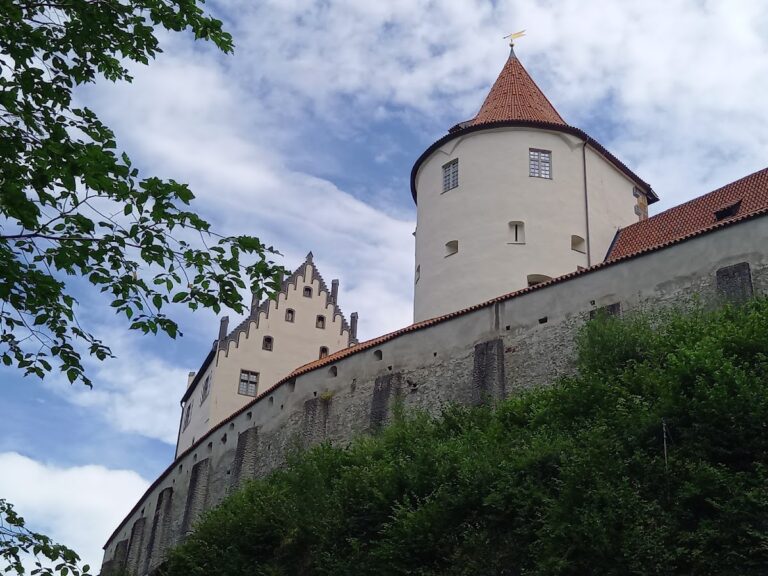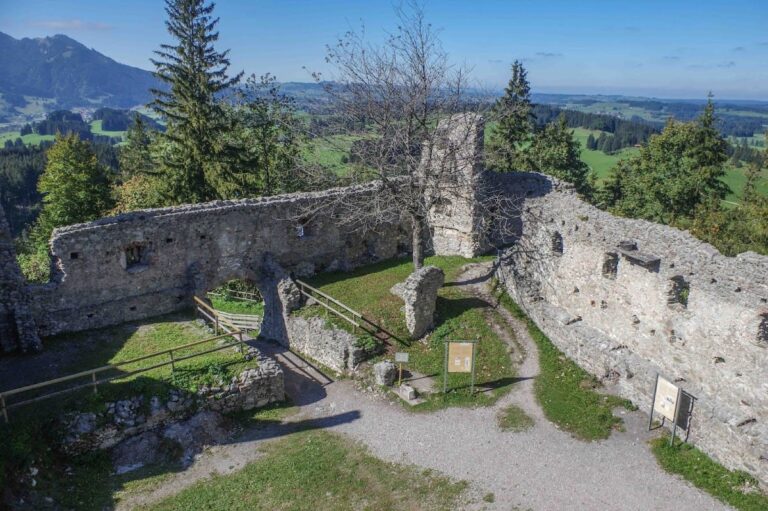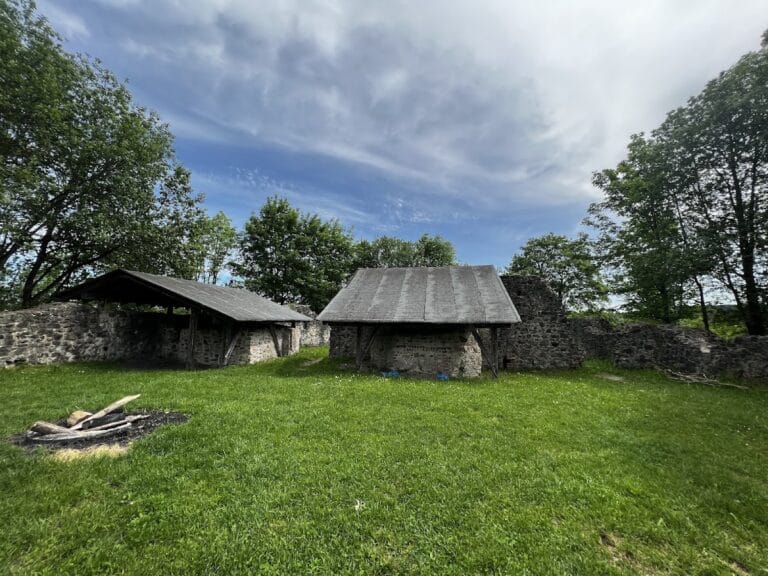Burg Hopfen: A Medieval Castle in Füssen, Germany
Visitor Information
Google Rating: 4.6
Popularity: Low
Google Maps: View on Google Maps
Country: Germany
Civilization: Unclassified
Remains: Military
History
Burg Hopfen is located on a hill above the district of Hopfen am See in the municipality of Füssen, Germany. The original builders of the castle remain uncertain, but it is believed to have been constructed during the medieval period by local powers in the region.
One of the earliest historical references possibly connected to Burg Hopfen dates back to 1078, during the Investiture Controversy, a significant conflict between secular and ecclesiastical authorities in the Holy Roman Empire. At that time, the Augsburg counter-bishop Wigolt sought refuge in a “strong castle,” which may correspond to the site of Burg Hopfen. This association implies that the castle played a role in the religious and political struggles of the late 11th century.
Between 1172 and 1191, the castle became the residence of a ministerial family linked to the Welf dynasty, a prominent noble house in medieval Germany. This family took its name from the castle itself, indicating their close connection to the site. Afterward, ownership passed to the Hochstift Augsburg, the ecclesiastical territory governed by the bishops of Augsburg. From this period until 1322, Burg Hopfen served as the administrative center for the Füssen provost, overseeing local religious and territorial affairs.
During the 15th century, the importance of Burg Hopfen diminished considerably following the construction of the Hohes Schloss (High Castle) in Füssen. As political and administrative activities shifted to the newer fortress, Burg Hopfen began to fall into disuse and eventually ruined. By the early 18th century, the remains of the castle were repurposed as a convenient source of building material; stone from its ruins was quarried to support the renovation of the monastery of St. Mang in Füssen.
In the late 20th and early 21st centuries, starting in 1999, the city of Füssen initiated archaeological excavations and conservation efforts at the site. Led by medieval archaeologist Joachim Zeune and supported by volunteers, this decade-long project uncovered much of the castle’s layout and clarified its building phases, facilitating a partial reconstruction of its original form and historical development.
Remains
The ruins of Burg Hopfen occupy a prominent hilltop, with a clearly defined layout that reveals its function as a medieval stone fortress. The castle’s design features a slightly raised inner courtyard, often called a bailey, which contained the main residential structure resembling a tower, known as the keep, alongside a chapel. East of this inner bailey lies a spacious outer courtyard that likely served everyday activities and housed additional buildings and defenses.
The castle’s defenses included two ditches carved into the hillside that formed protective barriers, particularly on the northeastern side where an outer bailey was situated. On the other sides, steep natural slopes enhanced the castle’s security by limiting access. The building materials primarily consisted of stone masonry, with walls uncovered during excavations preserved up to about three meters tall.
Excavation work removed thick layers of accumulated debris to expose these well-preserved stone walls. In some areas, breaches in the walls were stabilized or partially restored to ensure structural integrity. The castle is significant for being the earliest known stone fortress in the Allgäu region, characterized by a simple enclosing wall built without towers or bastions, showing a straightforward defensive strategy.
Today, the remains stand as mostly fragmentary but carefully conserved ruins. Their condition allows visitors to appreciate the castle’s original shape and its relationship to the surrounding landscape, marked by the Ammergau Alps and the Tannheim Mountains. The site’s historical importance and preserved ruins continue to demonstrate the development of medieval fortifications in this part of Bavaria.










